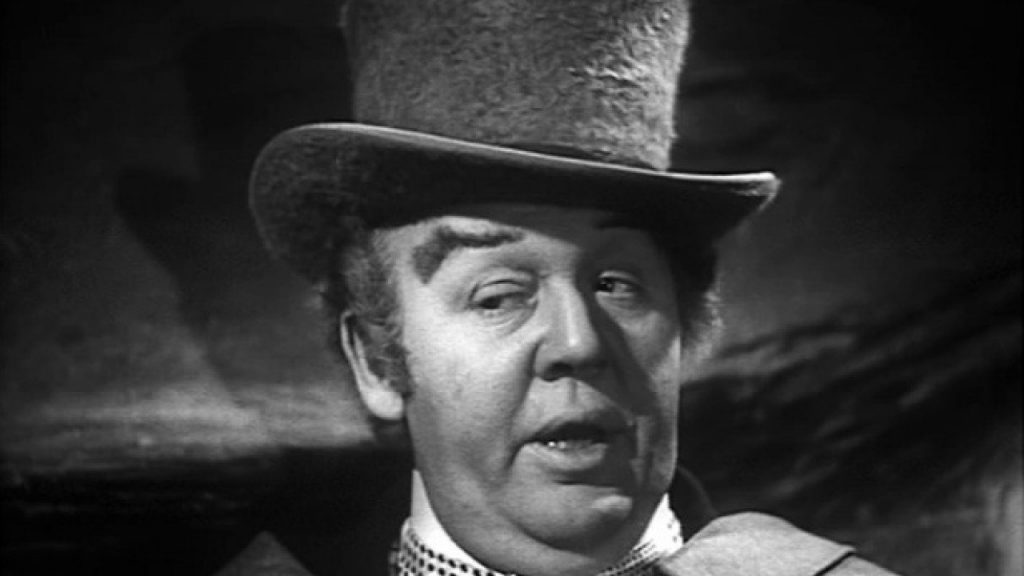From the June 9, 1989 Chicago Reader. –J.R.
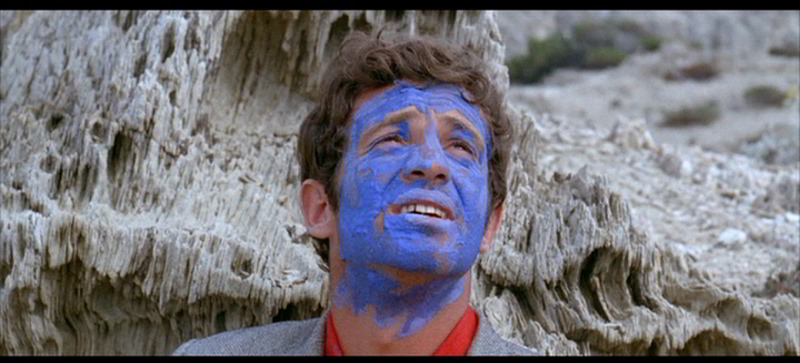
PIERROT LE FOU
**** (Masterpiece)
Directed and written by Jean-Luc Godard
With Jean-Paul Belmondo, Anna Karina, Dirk Sanders, Raymond Devos, Graziella Galvani, Roger Dutoit, Hans Meyer, Jimmy Karoubi, and Samuel Fuller.
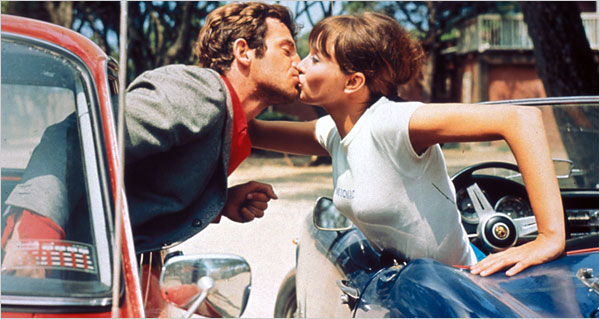
All the good movies have been made. — Peter Bogdanovich to Boris Karloff in Bogdanovich’s Targets (1968)
Two or three years ago I felt that everything had been done, that there was nothing left to do today. . . . Ivan the Terrible had been made, and Our Daily Bread. Make films about the people, they said; but The Crowd had already been made, so why remake it? I was, in a word, pessimistic. After Pierrot, I no longer feel this. Yes. One must film everything — talk about everything. Everything remains to be done. — Jean-Luc Godard in an interview about Pierrot le fou (1965)

After many years out of circulation, Jean-Luc Godard’s ninth feature is finally back, in a sparkling new 35-millimeter ‘Scope print, and the Film Center is celebrating with a week-long run. Looking at it again almost a quarter of a century after it was made, 20 years after its initial U.S. release, is a bit like visiting another planet; it’s an explosion of color, sound, music, passion, violence, and wit that illustrates what used to be regarded as cinema. Read more
From the Chicago Reader (January 1, 1992). — J.R.
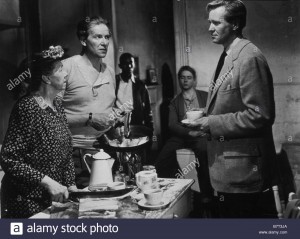
It’s a critical commonplace that the only good film of William Faulkner’s work is The Tarnished Angels (from Pylon) though some critics give an additional nod to Tomorrow for Robert Duvall’s performance. I would add this 1949 adaptation of Faulkner’s early response to southern racism, improbably made at MGM, though shot mainly on location in Faulkner’s hometown of Oxford, Mississippi. Perhaps because he was a southerner himself, Clarence Brown, best known as Greta Garbo’s favorite director, brought an unusual amount of feeling and taste to the material. An uppity black man (Juano Hernandez) is accused of murder, a potential lynch mob forms as he refuses to defend himself, and a white boy he’s befriended tries to get to the bottom of what actually happened. The story is treated with an unsensationalized and unsentimentalized clarity that seems unusually sophisticated for the period, and the other cast members — David Brian, Claude Jarman Jr., Porter Hall, and Elizabeth Patterson — are almost as good as Hernandez. 87 min. (JR)
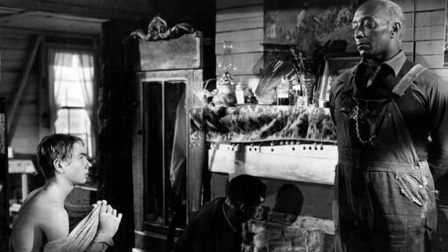 Read more
Read more

Although I couldn’t bring myself to watch all of Trump’s rally speech in Tulsa last night, I did tune into the Fox channel enough times to catch the gist of most of it. I wanted to solve the mystery about what was attractive enough to the 6200 or so mostly unmasked individuals to risk their lives and those of their friends and families in order to see and hear him rant and strut and thank everybody in person. And I think I came away with a provisional answer. (For those who missed all of it, or even some of it, I’m pasting the transcript of his endless dribble below in bold, all 28 pages of it.)
As usual, his spiel was all about grievance. The fact that he seemed to spend an eternity complaining about the media treatment of his walk down a ramp after his West Point graduation speech and his use of two hands while sipping water during the speech — what seemed like at least 15 minutes (or about four of the 28 pages) seeking to justify his behavior over just a few seconds — only proved that his inferiority complex was still the most discernible aspect of his ego, and clearly an aspect that many or most of his 6200 or so fans shared. Read more
In retrospect, it’s amazing to me how many good films I saw in 1998 — as evidenced by my ten-best piece for the Chicago Reader, published January 8, 1999. (P.S. The still at the very end of this article is from Masumura’s Red Angel, which I’m happy to say is now available on DVD, along with most of the films on this ten-best list.)
On September 24, 2010, “The Stunner” [sic] sent me the following message on MUBI: “I found this entry on your blog, about Manoel de Oliveira’s ‘Inquietude’ on your top 10 movies of 1998:’I prefer the French and Portuguese title of this three-part feature — which my dictionary defines as ‘disturbed state’— to its English title, Anxiety.’ A better translation for ‘inquietude’, in my opinion, would be something like ‘intranquility,’ ‘agitation’, or “inquietness’ — these are all good and quite literal translations and I, being Portuguese, think they are accurate synonyms.” — J.R.
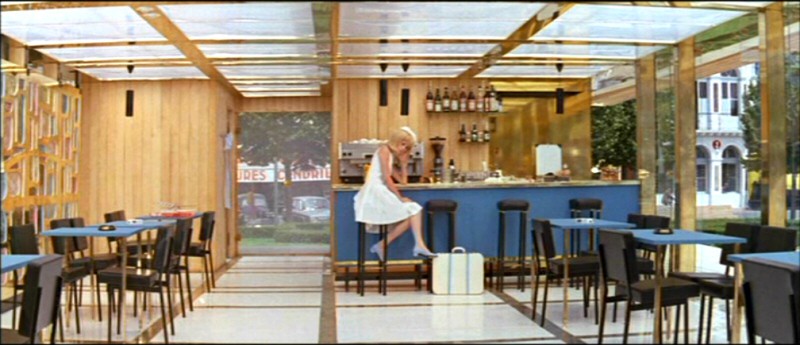
What do we mean when we declare something or someone “the best”? Last month, during my first visit to Tokyo, I served on a panel about the late Japanese master Yasujiro Ozu along with director Hou Hsiao-hsien, Hou’s principal screenwriter, the president of Tokyo University, and two French critics associated with Cahiers du Cinema. Read more
From the Chicago Reader (May 1, 1993). — J.R.
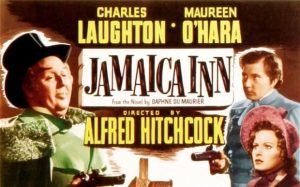
By common consent, one of Alfred Hitchcock’s poorest and least personal works (1939), though it has some compensations. The last film he made in Britain before moving to the U.S., it’s adapted — like Rebecca, his first American picture — from a Daphne du Maurier novel, about an 18th-century nobleman in Cornwall who doubles as the head of a band of smugglers. If this quirky pasteboard effort belongs to anyone, it’s Charles Laughton, who plays the lead with some wit and energy and also served as coproducer. Sidney Gilliat, Joan Harrison, and J.B. Priestley all worked on the script, and Maureen O’Hara, Leslie Banks, and Robert Newton costar. 98 min. (JR)
Read more
From the Chicago Reader (August 30, 1991). — J.R.

DEAD AGAIN ** (Worth seeing)
Directed by Kenneth Branagh
Written by Scott Frank
With Kenneth Branagh, Emma Thompson, Derek Jacobi, Andy Garcia, Hanna Schygulla, Robin Williams, Campbell Scott, and Wayne Knight.


The most instructive evening I’ve spent in the English theater was the first time I went, in the mid-60s, to a series of three one-act plays written by and starring Noel Coward called Suite in Three Keys, which may well have been Coward’s last stage appearance. In retrospect, what seemed so peculiarly English about the whole experience was the communion that existed between Coward and his audience. The plots of all three plays were negligible and the repartee more standard-issue than brilliant. All that really mattered, it seemed, was the mysterious intimacy, the almost conspiratorial rapport between Coward and his public, which had more to do with personality than with narrative, character, or even performance in the usual sense. The overall effect seemed to have a lot more to do with entertainment than with art; the feeling was much closer to that of patrons crowded around a piano in a pub than to theatergoers pondering lofty questions like the meaning of life. Read more
From the April 1, 1988 Chicago Reader. — J.R.
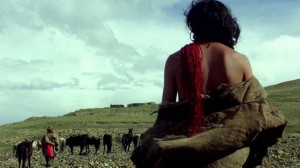
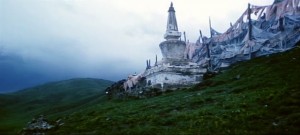
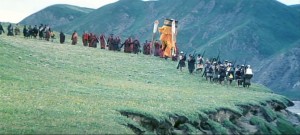
Tian Zhuangzhuang’s 1985 feature, set in the remote wilds of Tibet with a cast of local nonprofessionals, is a breathtaking spectacle in ‘Scope and color, perhaps the most personal of all the Fifth Generation Beijing films to have emerged from the People’s Republic of China (at least until Tian’s subsequent The Blue Kite). Tian’s originality and mastery of sound and image communicate directly, beyond the immediate trappings of the film’s slender plot (a horse thief expelled from his clan) and regional culture (Buddhist death rituals), expressing an environmental and ecological mysticism that suggests a new relationship between man and nature. Tian had said that he made this for the 21st century, yet even today it’s a film of the future. In Mandarin with subtitles. 88 min. (JR)
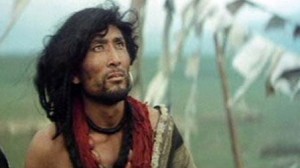 Read more
Read more
My column for the March 2020 issue of Caimán Cuadernoas de Cine… — J.R.
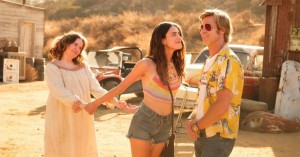

Greasing the wheels of commerce is usually the chief reason for end-of-the-year movie polls, which, like the Academy Awards, only intensifies our ongoing cultural confusion of film criticism with advertising. This helps to explain why (and how) Harvey Weinstein became Janet Maslin’s favourite film critic in her 1999 Cannes coverage for the New York Times, devoting far more space to his (negative) opinions about the prizes than anyone else’s, including the jury’s. (The fact that his own films in the festival hadn’t won prizes was of course crucial.) Perhaps because the head of that jury was David Cronenberg, an intellectual, the need for anti-intellectual cultural arbiters to drown out such controversial choices was as pressing two decades ago as it is today. We all need to be told not once, but repeatedly, why Once Upon a Time…in Hollywood is more important to the state of our civilization, our lives, our senses, and even our ethics than Vitalina Varela, and whereas this sort of gatekeeping function was once reserved for the Times and its consumerist equivalents, today its counterparts have included, among others, Sight and Sound, Film Comment, the New York Review of Books, the London Review of Books, Cahiers du Cinéma, Positif, and, alas, even Caimán Cuadernos de Cine. Read more
Australian critic Adrian Martin has called this no-budget wide-screen video from South Korea a small trash-art masterpiece, arguing that some effects are as dexterously staged as in a Sam Raimi movie but conceding that others fall flat as a pancake. Since fall 2001 it’s been making the rounds of international film festivals, picking up various fans and dissenters en route, and though I’m closer to the former, you should know what to expect: Working the backstreets of Seoul, a Lolita-age hooker in school uniform gets killed by an evil teacher and sliced and diced by a gang, but she returns to wreak vengeance after being stitched back together by a mad scientist — all in an hour. If you can accept such a premise, you’re bound to admire director Nam Gee-wong’s energy and resourcefulness with a threadbare budget. In contrast the accompanying three-minute experimental video Ya Private Sky seems like random aggression, though director Stom Sogo reports that he whittled it down from five hours of Super-8 footage. (JR) Read more
From the Chicago Reader (December 20, 1991). — J.R.
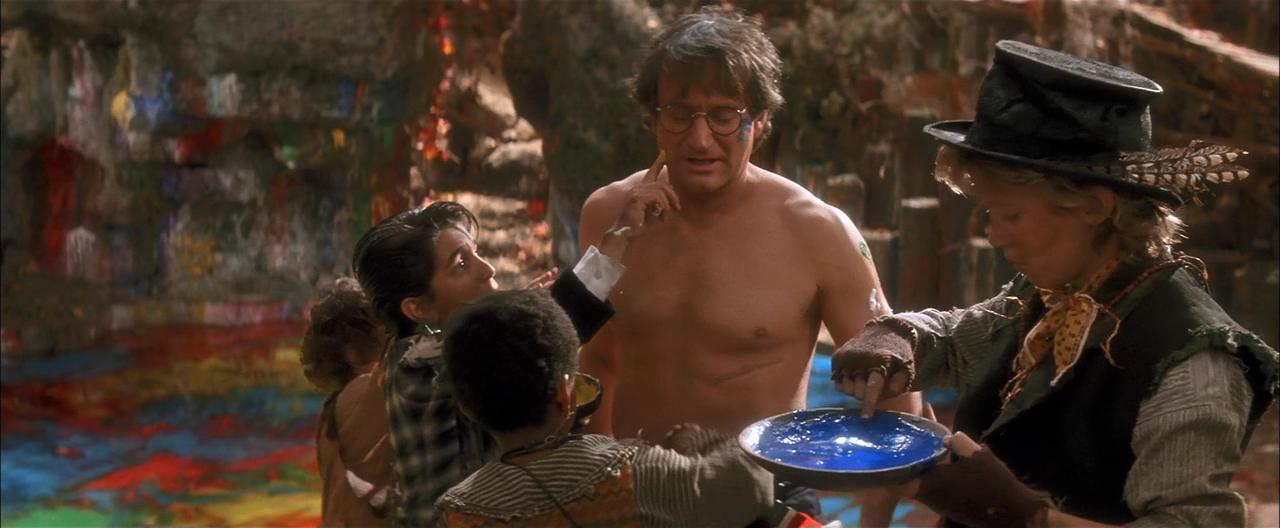
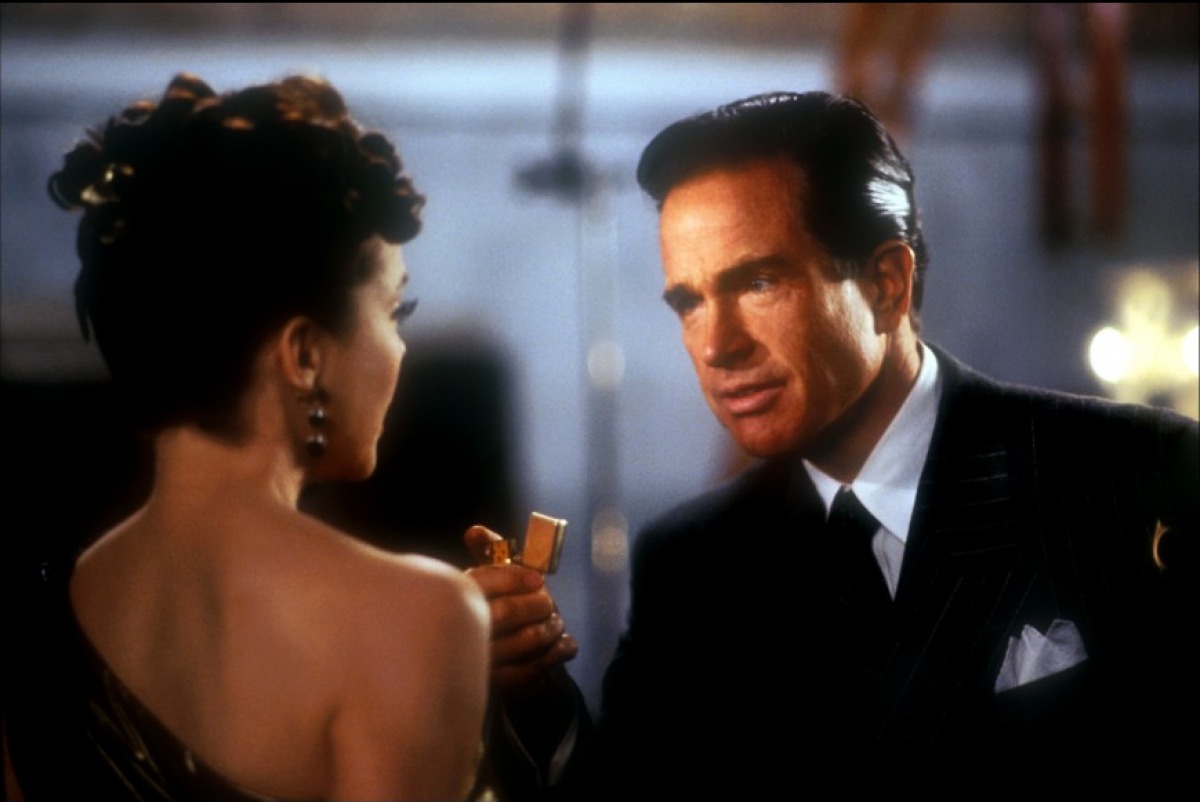
HOOK
** (Worth seeing)
Directed by Steven Spielberg
Written by Jim V. Hart, Malia Scotch Marmo, and Nick Castle
With Dustin Hoffman, Robin Williams, Julia Roberts, Bob Hoskins, Maggie Smith, Caroline Goodall, and Charlie Korsmo.
BUGSY
*** (A must-see)
Directed by Barry Levinson
Written by James Toback
With Warren Beatty, Annette Bening, Harvey Keitel, Ben Kingsley, Elliott Gould, Joe Mantegna, and Bebe Neuwirth.
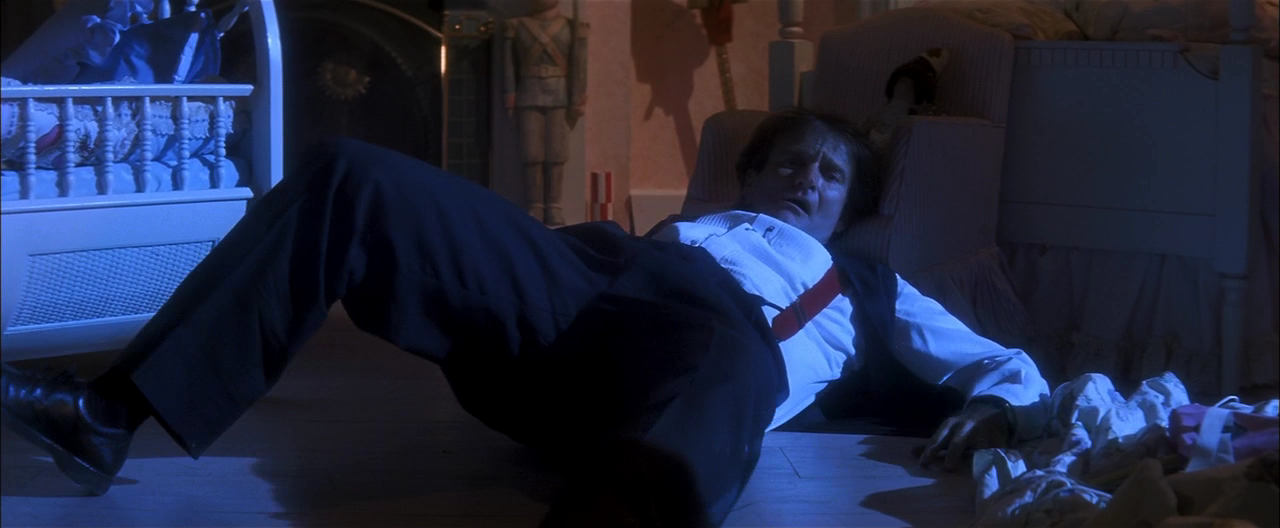
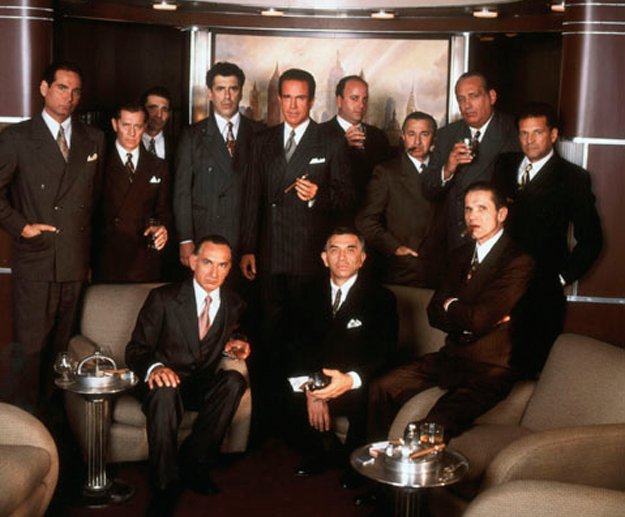
Wistful self-portraits of their respective stars — Steven Spielberg and Warren Beatty, two aging boy wonders lusting after the old magic — Hook and Bugsy are also lengthy meditations on investments, financial as well as spiritual. Coincidentally both projects were conceived seven years ago and have been gestating ever since: Spielberg started planning a straight version of J.M. Barrie’s Peter Pan in 1984, then decided to concoct an updated sequel set in the present, and the same year Beatty commissioned James Toback to write an original screenplay about Bugsy Siegel, which started out as an epic about his entire life and was gradually whittled down to cover only the end of his life in the 1940s. Hook is contrived to move from gloom to joy, while Bugsy charts a slow downward spiral into melancholy; but both movies leave one with a sense of failed purposes — and of an obstinate will to believe that exceeds the meaning or logic of any actual belief. Read more
From Cineaste, Vol. XXIX, No. 4, September 2004. This is also reprinted in my collection, Goodbye Cinema, Hello Cinephilia. — J.R.

Although I suspect many would dispute this characterization, I think the period we’re now living through may well be the first in which scholars have finally figured out a good way of teaching film history. And significantly, this discovery isn’t necessarily coming out of academic film study, even if a few academics are making major contributions to it.
I’m speaking, of course, about the didactic materials accompanying the rerelease of some classic films on DVD. Three examples that I believe illustrate my thesis especially well are (1) the various commentaries or audiovisual essays offered by Yuri Tsivian on DVD editions of Mad Love: The Films of Evgeni Bauer (Milestone), Dziga Vertov’s Man with a Movie Camera (Kino International/BFI), and Sergei Eisenstein’s Ivan the Terrible (Criterion); (2) the commentaries offered by David Kalat on Fritz Lang’s Dr. Mabuse the Gambler (Blackhawk Films) and The Testament of Dr. Mabuse (Criterion); and (3) the various documentary materials offered on “The Chaplin Collection,” a twelve-box set issued jointly by MK2 and Warners and put together with the full resources and cooperation of the Charles Chaplin estate. Read more
Posted on DVD Beaver, July 2007; I’ve updated the links when necessary. — J.R.
Some genres are a lot more elastic than others. Our notions of what a Western or a musical consists of are reasonably firm. But thrillers tend to be all over the place, overlapping at various times with crime films, adventure films, heist films, noirs, mystery stories, spy stories, melodramas, and even comedies, period films, and art movies —- to propose a far from exhaustive list.
In order to demonstrate this overall versatility, I’ve come up with 18 recommended titles that I’m listing and briefly describing below, in alphabetical order. A dozen are in English, three are in French, and one apiece is in German, Italian, or Japanese. All but two are currently available on DVD, although in at least one case you’ll have to go beyond American sources in order to acquire it. And ironically, the two that are unavailable are both Hollywood classics —- one more indication of the degree to which some of the major studios and/or the inheritors of their treasures still don’t have a very clear idea of what they possess and keep out of reach.
(NOTE: CLICK ON TITLES, COVERS OR UNDERLINED TEXT FOR LINKS)
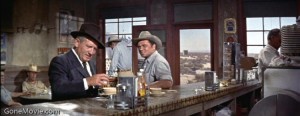
Read more
The New York and South by Southwest film festivals must have had their reasons for showing this 1999 black-and-white neo-neo-noir — adapted by director Robinson Devor from a Charles Willeford novel — but I think it’s like a piece of chalk scraping against a blackboard for 87 minutes. Maybe this is because I like 50s and 60s noirs too much to like parodies that reduce them to camp mannerisms and attitudes. Or maybe it’s because I’m too fond of Willeford at his best (e.g., the Hoke Mosley quartet) and too respectful of the good movies derived from these novels (Cockfighter, Miami Blues) to get a kick from a badly acted pastiche of one of the lesser ones, trumpeted in the press materials as a psycho-pulp classic. I suppose that if you weren’t around in the middle of the century and you enjoy feeling superior to lounge music by Martin Denny, Yma Sumac, and Cal Tjader, you might like this. With Patrick Warburton and Emily Newman. (JR) Read more
From the Chicago Reader (January 4, 1991). — J.R.��

Looking over a list of all the new movies I saw in 1990, I was shocked to discover how forgettable many of them were — so much so that it took considerable effort in many cases for me to remember much more than their titles. Crazy People, Bad Influence, Opportunity Knocks, I Love You to Death, Short Time, Cadillac Man, Die Hard 2, Another 48 Hrs., Funny About Love, and Sibling Rivalry all started turning into mush as soon as I saw them. Summoning them up weeks or months later is a bit like trying to remember what I had for lunch on the days I saw them.
Maybe it’s my middle-age talking, but I think something else is involved as well. We’ve been told repeatedly over the past couple of years that the most serious problem affecting this country is not poverty, not AIDS, not violations of the Constitution and the Bill of Rights, not a warmongering president or racism or misogyny, and not corporate and governmental skulduggery and deception — but the sale of harmful drugs. Yet during this same period Hollywood movies that will cause comparable amounts of brain damage have commanded almost as much space and attention in the media as all these problems combined. Read more
My DVD column in Cinema Scope 44, Fall 2010. — J.R.
1. A confession
Since retiring from my job as a weekly reviewer in early 2008, I’ve been discovering that I usually prefer watching mediocre films of the past (chiefly from the 30s through the 70s) to watching mediocre films of the present — unlike some of my former readers, who irrationally conclude that I’ve stopped writing about movies because I no longer work for the studio airheads in implementing their latest ad campaigns. That is, I no longer train most of my attention on contemporary industry releases, as I was obliged to do for the preceding 20 years, because, in keeping with Raymond Durgnat’s apt observation that dated films sometimes have more to teach us than “timeless” classics, I’m looking for stuff I can chew on. (Try to imagine what literary criticism would be like if most or all of its practitioners decided that 2010 publications currently on sale at K-Mart comprised the bulk of all the literature ever published that was worthy of our close attention.)
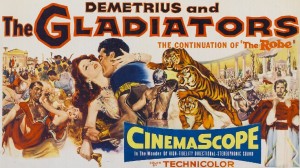
This is why, for instance, I wound up picking up a copy of Delmer Daves and Philip Dunne’s sequel to The Robe, Demetrius and the Gladiators (1954), at a video store in Córdoba, Argentina in late July (although, as I later discovered, I could have picked it up on Amazon for roughly the same price): not because it’s any sort of masterpiece (though it’s probably a better movie than The Robe), but because I find it interesting from multiple vantage points, e.g., Read more









